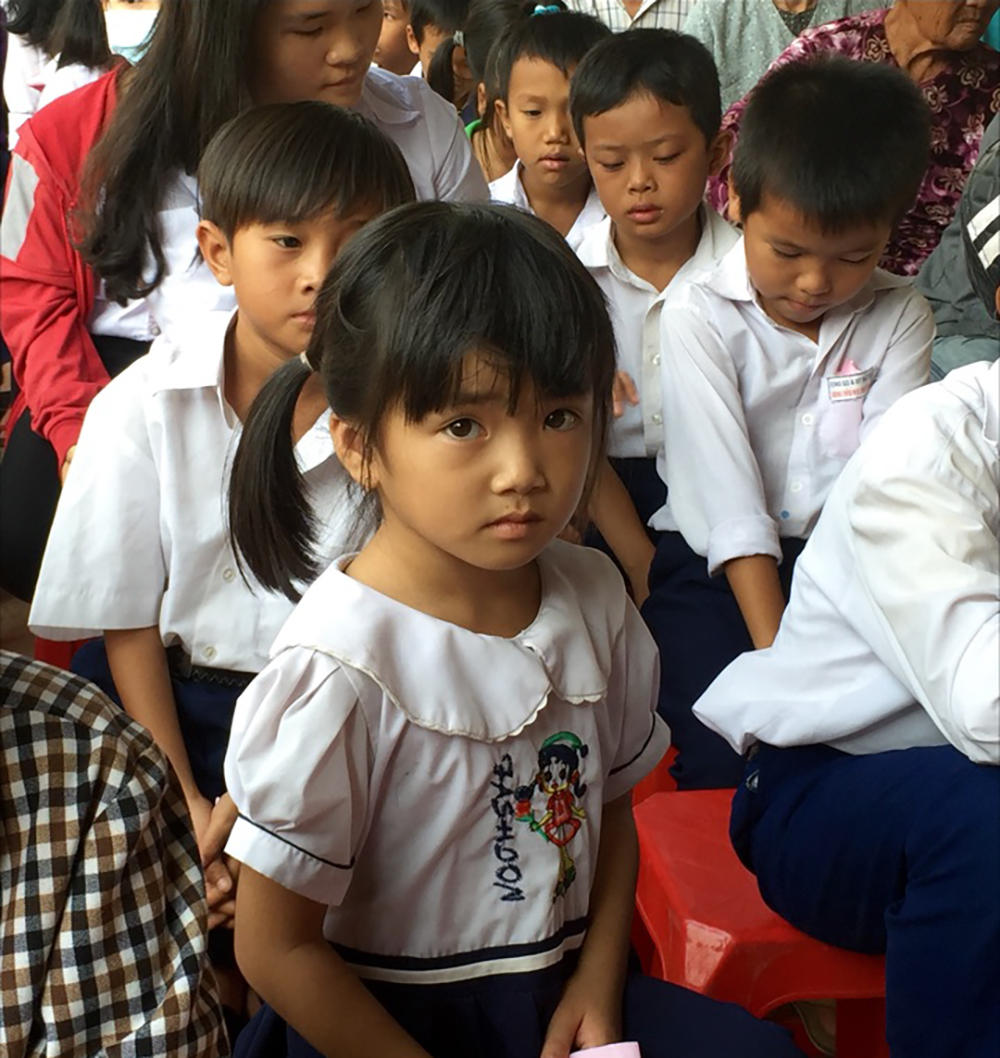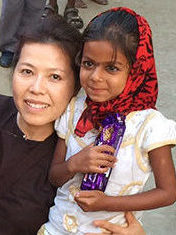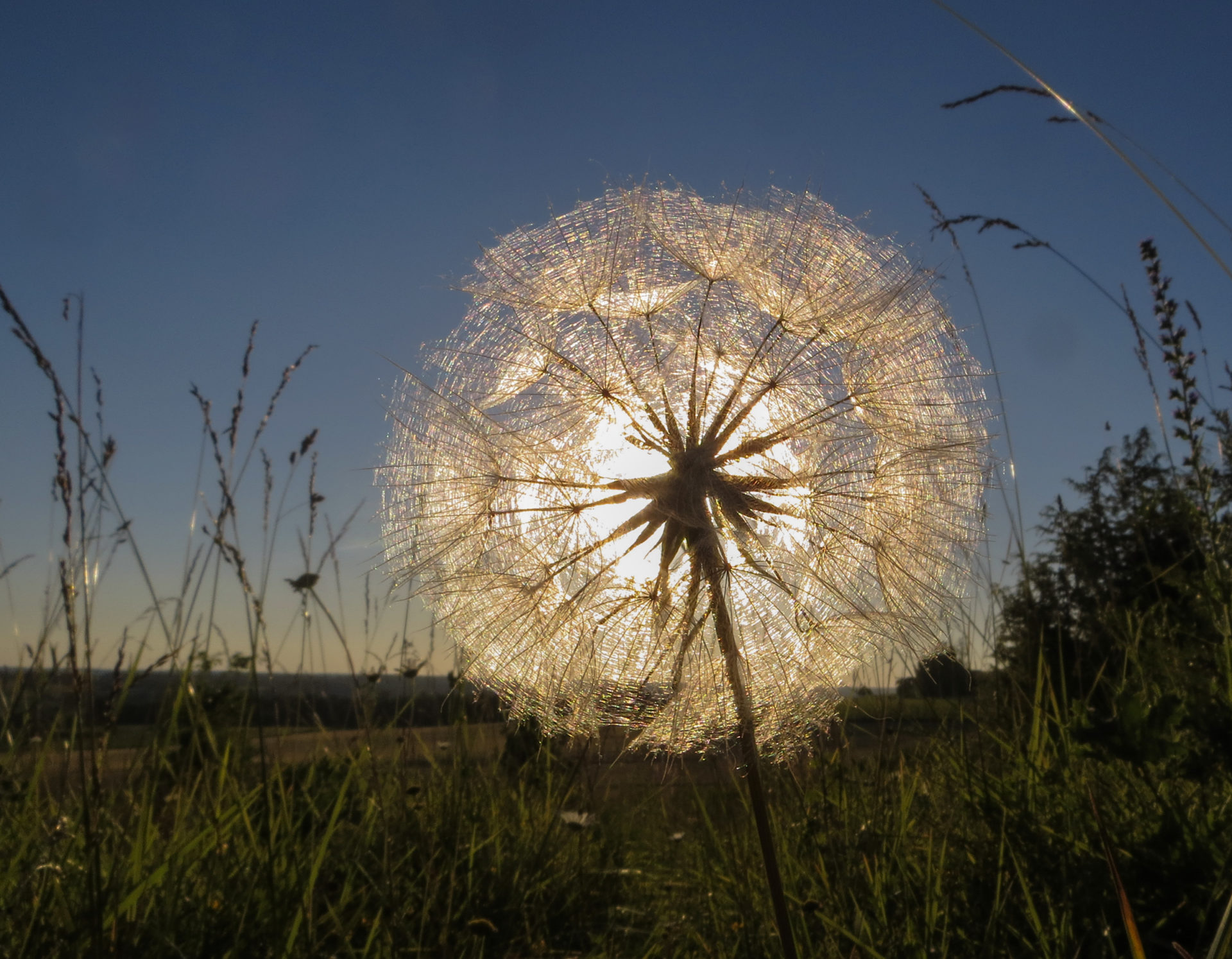By Chan Luu Tu

One time when I was watching a recording of one of Thay’s talks, I found myself down on my knees, prostrating in front of the TV. It was rather strange! What made me instinctively kneel? It was the first time I examined my feelings and visceral reactions to Thay’s teachings. He spoke to all the emotions that have been buried deep inside me for years.
By Chan Luu Tu

One time when I was watching a recording of one of Thay’s talks, I found myself down on my knees, prostrating in front of the TV. It was rather strange! What made me instinctively kneel? It was the first time I examined my feelings and visceral reactions to Thay’s teachings. He spoke to all the emotions that have been buried deep inside me for years.
I was thoroughly intrigued from that moment and ordered more DVDs of his talks. I was often startled while watching them because I thought he was speaking directly to me. All those mistakes he pointed out—they were just for me. I cried. Seeing and hearing the beautiful faces and voices of the Plum Village Sangha chanting “Namo Avalokiteshvara” liberated my soul from all depths of sadness. I closed my eyes and listened. My heart sank into an empty space where no ideas were floating around, no negative emotions or suffering arising. I became lost in the rhythm and words, “Ohm ohm ohm ohm … ohm ohm ohm …” I came to the realization that my heart had truly found peace. At this point, I knew I had to go to Plum Village and meet the Vietnamese Zen master.
MY TRUE SELF
During the days I spent at Plum Village, I saw beautiful earthy tones in the Sangha’s robes. I saw vibrant green leaves stretch across the valley. I saw my heart dyed green. I saw an exuberant path full of the sweetness of fruits that my soul opened to. I saw people helping one another and how they learned to stay calm, patient, and mindful. Suddenly, I felt closer to everyone and I loved them more. I found myself being able to easily ignore things that would usually incite disagreement and dislike in me. At Plum Village I learned how to eat gratefully, walk mindfully, listen deeply, and smile from my heart. I learned how to speak softly using kind, loving words. I found myself.
Too soon, time was up. After days of practice, I had to go home like all the other students. I cried when I had to leave the single place where I could see my true self, where I was able to be accepting of so much. Now I understand why babies cry after birth: it’s because they’ve left the warmest, kindest place they’ll ever be—their mother’s unconditionally loving, all-embracing womb.
After returning home, I practiced diligently. I learned to use gentle words of encouragement or just to remain silent. I learned to be present in every step and breath and to appreciate the earth under my feet. I learned to reflect every night on what and how I’d done during the day. Had I uttered any words that may have hurt anyone? Did I allow my anger toward others to reach my complacent ego, or was I able to transform my anger by recognizing and embracing it?
FROM INSIGHTS TO ACTION
Feeling energized by my new insights, I began looking into opportunities to do charitable work. I joined Compassionate Hands in Orange County, California. The work we do focuses on giving direct help to the poor without going through a middleman. Once we arrive at our destination (we’ve visited Vietnam, Cambodia, and India annually for the past several years), we personally distribute food and gifts, grant scholarships to children, make plans to build houses for those in need, and set up monthly rice distributions. Working with others with the common purpose of giving our time and energy to help the less fortunate, I no longer feel alone or lonely.
On one trip, our group of seven people visited several bright students who couldn’t afford to continue in school. On the way to visit one of the students, we weaved through many rice fields on a myriad of small roads and paths. With sun rays beating down on top of our heads, our backs drenched in sweat, we finally arrived in front of a hut with four tattered sides and holes in the roof. Several containers for catching rainwater lay scattered on the ground.
The boy who lived there had to take care of his mother, whose mental illness was less severe than his brother’s. At night he lit candles to study because he believed education was the only key to a better future. I felt my heart tighten and my tears flow heavily when I listened to him tell his story. I held him in my arms with a wish to help this child even though I was unsure if I was capable of helping.
As we left his home, many questions were racing through my mind. Why should a ten-year-old child carry these kinds of burdens? How many more children live in similar circumstances in this village? In the province? In the world? What can I do to help? I could not just sit there, cry, and think about how much suffering exists in this world; I had to take action. I felt the urge to share my modest earnings to build a house for him, to offer him a scholarship on my own. He sent me pictures of his new house, new desk, new smiles, and I smiled. I helped myself by helping him. His joy became mine.
Another time, we visited patients severely disfigured by ulcerations on their faces and bodies. I also saw a person with a very large head and a tiny body. At first sight, I panicked, took a step back, and looked away. At the same time, I recognized a deep pain in my heart. I imagined myself in their skin, with their illnesses. I would probably be feeling a lot of distress and shame, and would need a great deal of compassion from others. I might be in so much pain that I might not have the courage to continue to live. Once these thoughts manifested in my consciousness, my heart grew softer, and my fear transformed into courage to turn around and look into the eyes of the human beings I had failed to see behind the disfigurements that have been inflicted upon them.
Those confrontations were difficult and with each one, I practiced listening searchingly to my thoughts and feelings. So much can be learned from within. Our hearts are our teachers.
THE HUE OF HOPE
Over the course of my philanthropic trips across many countries, I’ve met sharp, bright-eyed individuals from humble families that exude such hope and joy when receiving gifts from donors. I have felt my heart expand as I warmly and playfully interacted with children. I have realized this world isn’t just filled with tears; it’s also abundant in refreshing smiles and is tinted with the hue of hope.
From those experiences abroad, I started to see more clearly the countless problems that exist in my personal life, my society, the economy, and politics. I realized that despite the obstacles and road bumps we may meet, the world is also adorned with beautiful wildflowers that manage to flourish among the jagged rocks, just as the delightful lotus grows from the foul mud! I appreciate the impermanence of daily life, and I recognize the frailty of life. I realize that there’s no birth and no death.
GRATITUDE TO THAY
I’m deeply grateful for Thay’s simple teachings of the Fourteen Mindfulness Trainings, which have inspired me to make important changes in my life. For example, I’ve realized that the most direct means to protect animals is to eat a vegetarian diet, and I’ve made the commitment to be vegetarian for over a decade. I also wanted to apply the teachings in my workplace. I found opportunities to bring joy to my staff members by listening to their problems and being more accommodating of their schedules. I even created a small breathing room for my employees to enjoy during their break time. A few of us have formed a Sangha! I’ve been sharing the teachings I’ve been so blessed to receive to help transform suffering in my staff. What has brought me most happiness on my path of practice is that my staff members have become vegetarian.
Dear Thay,
For your continuation, I would like to “show off” what I have cultivated in my practice. I think identification and realization are essential in pursuit of a spiritual path. Lacking the ability to identify things, I would not see the wrongs I’ve done. Lacking realization, I would lose mindfulness. Without identification, I wouldn’t know if I were angry. Without realization, I would not know how to be present. Respected Thay, I often look within and realize that emotions are the epitome of impermanence. If I’m not mindful and aware of my emotions, whether latent or manifesting, I will not have any control over them, which could allow negative emotions like anger, sadness, and hatred to reign. Together, identification and realization form a never-ending sutra that I need to read and recite without interruption for the rest of my life. Learning these two virtues has led to the greatest transformations that I’ve reaped since Thay has been my guiding light. I always pray for my beloved teacher’s speedy recovery and for every Sangha member’s health and success on the path of mindfulness.

Chan Luu Tu, True Stream of Compassion, is a member of La Boi Sangha.

